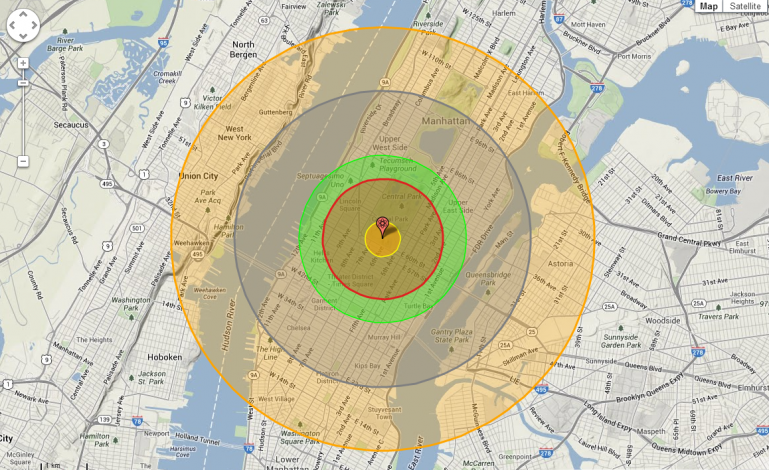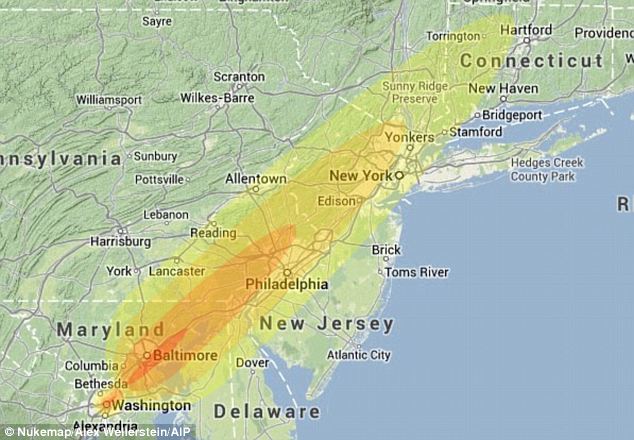The nuclear bomb simulator that lets users nuke their home cities.
NUKEMAP is an interactive map using Google Maps API and unclassified nuclear weapons effects data, created by Alex Wellerstein, a historian of science at the Stevens Institute of Technology who studies the history of nuclear weapons. The initial version was created in February 2012, with major upgrades in July 2013, which enables users to model the explosion of nuclear weapons (contemporary, historical, or of any given arbitrary yield) on virtually any terrain and at virtually any altitude of their choice. A variation of the script, NUKEMAP3D, features rough models of mushroom clouds in 3D, scaled to their appropriate sizes. NUKEMAP3D doesn’t work on most browsers anymore for NPAPI plugins are no longer supported by them.
The computer simulation of the effects of nuclear detonations has been described both as “stomach-churning” (by Wellerstein himself) and as “the most fun I’ve had with Google Maps since… well, possibly ever” despite the admittedly abjectly grim nature of the subject. Originally intended in part as a pedagogical device to illustrate the stark difference in scale between fission and fusion bombs, more than three million people as of 2012 have exploded some 30 million virtual nuclear warheads; having gone viral, the increased popularity of the website necessitated a move to new servers. The website averages five “nukes” per visitor. According to the site’s own counter, in November 2016 users had simulated over 90 million nuclear explosions.
The NUKEMAP was a finalist for the National Science Foundation’s Visualization Challenge in 2014.
Users can select the location and size of the bombs.
The site shows the spread of the mushroom cloud including casualty numbers.
This map created by nuclear weapon historian Alex Wellerstein demonstrates the fallout caused by 2.3 megaton bomb dropped on Washington. It was modeled on the Soviet weapons held during the Cuban Missile Crisis of the 1960s


Sorry, the comment form is closed at this time.